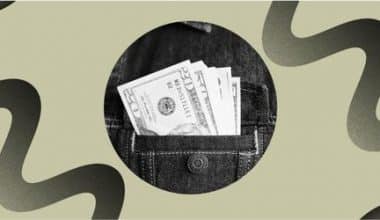Have you ever encountered a scenario where a borrower is harassed continuously or manipulated into paying a high-interest loan? That’s just predatory lending; this time, a broad list of predatory lending companies target people by using their debt to get them to pay back more than the minimum loan. However, with the right amount of information you can avoid predatory lending practice.
Predatory Lending
Predatory lending refers to any dishonest actions taken by lenders to attract, induce, deceive, or aid borrowers into taking out loans they are unable to repay in a reasonable amount of time or must repay at a cost that is significantly higher than the market rate. Most times, predatory lenders profit on the predicament or ignorance of the borrower.
The classic illustration of a predatory lender is a loan shark, who lends money at exceptionally high-interest rates and may even use threats of violence to collect on their obligations.
Predatory lending is, however, frequently carried out by more reputable organizations like banks, finance businesses, mortgage brokers, law firms, or real estate contractors.
Many borrowers are at danger due to predatory lending, but it particularly targets people who have few credit options or are otherwise vulnerable. those who frequently and urgently need money to make ends meet due to insufficient income. Additionally, people who have bad credit, have less access to education or are the victims of loan practices that are biased against them because of their color, ethnicity, age, or handicap.
It is more challenging for borrowers to compare offers when predatory lenders target areas with limited other loan options.
They employ a range of unfair and misleading business practices to make money by luring customers with aggressive sales tactics via mail, phone, TV, radio, and even door-to-door.
Predatory lending favours the lender while ignoring or impeding the borrower’s capacity to repurchase the debt.
What is a Predatory Lending?
Predatory lending is the term for unethical, unfair, dishonest, or fraudulent loan origination tactics used by lending institutions. It is the practice of a lender deceptively enticing borrowers to agree to unjust and abusive loan terms, or repeatedly breaching those terms in ways that make it impossible for the borrower to defend against. Although some of the specific techniques that are frequently labeled as predatory are prohibited by law, numerous government agencies use the term as a blanket term for many other illegal actions in the loan sector.
Predatory mortgage servicing, which opponents describe as unfair, dishonest, or fraudulent tactics during the loan or mortgage servicing process after loan origination, should not be confused with predatory lending.
Examples of Predatory Lending
When the borrower is misled into a transaction that goes against their expectations, lending and mortgage origination procedures turn into “predatory.”
Lenders, mortgage brokers, real estate agents, attorneys, and home improvement contractors could all be involved in predatory lending practice. Their schemes frequently go for those with low incomes but large home equity. Examples of typical predatory lending practice include
#1. Equity Stripping
Equity is a collection of techniques with the aim to lower a property’s overall equity. Predatory lenders who want to take advantage of homeowners facing foreclosure as well as debtors who want to make their houses unattractive to creditors can both use equity stripping tactics.
Whether or whether you are able to make the payments, the lender bases the loan on the equity in your property. Your home may be foreclosed upon if you are unable to make payments.
#2. Bait-and-switch Tactics
The lender could promise you one kind of loan or interest rate but unjustifiably deliver you another.
Occasionally, a higher (and unaffordable) interest rate won’t start to accrue until months after you’ve started making loan payments.
#3. Loan Flipping
Loan flipping happens when lenders entice and persuade homeowners to frequently refinance their houses.
Your loan is refinanced by a lender into a new, expensive, long-term loan. You must pay points and other costs each time the lender “flips” the existing loan.
#4. Packing
You obtain a loan with fees for services you didn’t ask for or need. Making the borrower think credit insurance must be acquired and incorporated into the loan in order for it to be approved is the most common example of “packing.”
#5. Balloon Payments
A balloon payment is a one-time, larger-than-normal payment due at the conclusion of the loan term. If you have a mortgage with a balloon payment, your payments can be lower in the years before the balloon payment is due, but you might wind up owing a sizable sum at the conclusion of the loan.
You think you’ve applied for a loan with a low interest rate and small monthly payments, only to find out at closing that it’s only temporary and you’ll have to refinance it within a year.
Consider a scenario in which a borrower takes out a $200,000 mortgage with a seven-year term and a 4.5% interest rate. They will pay $1,013 every month for seven years. They have a $175,066 balloon payment due at the end of the seven-year term.
List of Predatory Lending Companies
Predatory lending companies are businesses that underreport or fail to adequately communicate to borrowers the exact costs and risks of loans. They charge “clients undeserved, disguised, or unreasonable fees” and have “risky loan terms and structures” that make it more challenging or expensive for borrowers to lower their obligations.”
These are the list of companies who commit predatory lending practice:
- American First Finance
- Axcess Financial
- EasyPay
- Elevate
- Enova
- LoanMart
- OppLoans
- Personify Financial,
- EZ$Money Check Cashing
- LoanMe, Lendly LLC
- MoneyKey
- Quickcredit.com
- SunUp Financial
Predatory Lending Practice
Various lending practices that are occasionally described to as predatory include overdraft loans, payday loans, some credit cards, or other forms of (again, frequently subprime) consumer debt. Predatory lenders frequently target the elderly, racial minorities, the destitute, and those with less education, however victims of predatory lending come from all socioeconomic groups.
The persistence of predatory lending might be seen as a yardstick for gauging the success of philanthropic loans intended to support entrepreneurship. Loan sharks and other predatory lenders shouldn’t be able to survive in areas where charitable lending programs (microfinance) are readily accessible.
Predatory lending often involves loans that are secured by some sort of collateral, such a car or house, so that if the borrower defaults on the loan, the lender can retake possession of or foreclose on the property and make money by selling it. It’s possible to charge lenders with misleading borrowers into thinking that their ability to pay is higher or that their interest rate is lower than it actually is. Repossession or foreclosure on the collateral may be profitable for the lender or others acting as their agents.
Loan sharking and predatory lending are frequently contrasted, but they are distinct from one another in that loan sharks do not take their victims’ financial situations seriously.
How Do Predatory Lenders Target Consumers?
They may target neighborhoods with a high concentration of elderly homeowners. They also target homeowners with limited access to finance, or ethnic populations by advertising in a particular language.
Sometimes, they promise debt relief through lower monthly payments. However, they fail to disclose that the actual cost to the borrower will be higher and lengthier installments.
Predatory lenders can entice consumers into doing business with them by using aggressive mail, phone, TV, and even door-to-door sales tactics.
Tips on Preventing Predatory Lending
Sometimes we may be in a tight position or in urgent need. That doesn’t worth falling a victim to predatory lending. Here we share tips on preventing predatory lending practice:
- When searching for a lender compare prices or betterstill seek recommendation from your most trusted allies. However, If someone tries to direct you to just one lender, be careful and do your research.
- Compare the offers of various lender. With this any offer, you can avoid any offer which seems fishy or unusual.
- Ask questions and resist any pressure to enter into a transaction with which you are uncomfortable. You always have the option to reject an offer if the terms are unacceptable to you.
- Even if you feel ashamed for not knowing the answer, keep asking questions until you fully comprehend the loan terms.
- And if at all you fall a victim do not hesitate to make a report. You should register a complaint with the Washington State Department of Financial Institutions if you believe a corporation is engaging in predatory lending practices.
What is Considered Predatory Lending?
Typically, predatory lending refers to the practice of imposing unfair, misleading, or abusive loan terms on borrowers. These loans frequently come with
- Excessive fees and interest rates,
- Drain the borrower’s equity, or
- Place a creditworthy borrower in a loan with a worse credit rating (and higher cost),
all to the lender’s advantage.
Predatory lenders frequently employ pushy sales techniques and prey on the borrowers’ ignorance of financial transactions. They lure, encourage, and help a borrower take out a loan. They will not reasonably be able to repay through deceptive or dishonest conduct and a lack of transparency.
What are Some Examples of Predatory Lending?
- Aggressive solicitations
- Exorbitant borrowing fees,
- Severe prepayment fines
- Huge balloon payments
- Encouragement to repeatedly flip loans
Is Predatory Lending a Crime?
Technically yes, since it deals with manipulating people into taking high interest loan. It is also a crime because it luring and deceiving vulnerable victims into taking out a loan that has greater costs. In most cases, it affects the victim credit history and they are most unlikely to be able to repay.
Although there are regulations in place to protect customers against predatory lending. Many lenders nevertheless manage to get away with it, in part because customers are unaware of their rights.
What Is Another Name for Predatory Lending?
Predatory lending has different names according to certain people and locations, but one thing is for sure: it still has the same meaning. Other names that go hand in hand with predatory practice include:
- Loan sharking
- Coercive lending
- Overdraft loans
What are Signs of Predatory Lending Practices?
Although it can be challenging to avoid predatory lending especially when the borrower is in urgent need and financially insecure. Many at times unemployed Americans and those unable to make their mortgage payments are the target of this perilous attack thus endangering the stability of their homes and credit history.
The following are warning signs of predatory lending practice by debt management professionals and financial planners:
- Sounds too simple to qualify for;
- High actual costs
- High interest rates and expenses that are unusual for the sector;
- The Absence of license;
- No credit check financing
- No credit bureau reporting.
- The lender is listed in either the CFPB’s Consumer Complaint Database or the FTC’s Scam Alerts list.
What Interest Rate Is Predatory Lending?
The concept of predatory lending involves overcharging a borrower for interest rates and other costs. Though the standard interest rate applicable in lending is 1% many lenders usually charge borrowers over 5%. Consumers without credit challenges should have loans underwritten by premier lenders.
Conclusion
Predatory lending has the potential to be distressing, especially for those people who are typically vulnerable borrowers. If you ever come across such predatory practices imposed by their related companies, do the right thing and report these companies with proof or evidence.
FAQs
Who do predatory lenders target?
Typically, predatory lenders prey on the underprivileged, elderly, and people with low education levels. They also prey on those who require quick cash for urgent expenses like paying medical bills, completing house repairs, or making car payments. Additionally, these lenders go after debtors with poor credit or those who have recently lost their employment.
What are the 5 P's of lending?
In order to achieve financial inclusion, You must consider these five terms
- Product
- Place
- Price
- Protection
- Profit.
What are the principles of lending?
Any banking institution’s lending procedure is founded on a few fundamental characteristics, including security, liquidity, diversity, stability, and profitability.
What are the 3 types of lending discrimination?
- Evidence of disparate impact
- Proof of differential impact
- Overt evidence of differential treatment.
References
Related Articles
- WORKPLACE COMMUNICATION: Why It Is Important
- Hard Money Lending: Meaning and All You Need to Know(
- ALTERNATIVE LENDING: The Ultimate Guide to Alternative Loan Options in 2023(
- HOW TO BUY A BUSINESS WITH NO MONEY AND BAD CREDIT: Guideline(
- WORKING CAPITAL LOANS: Documents, Examples, and How to Get Funding for Working Capital(






